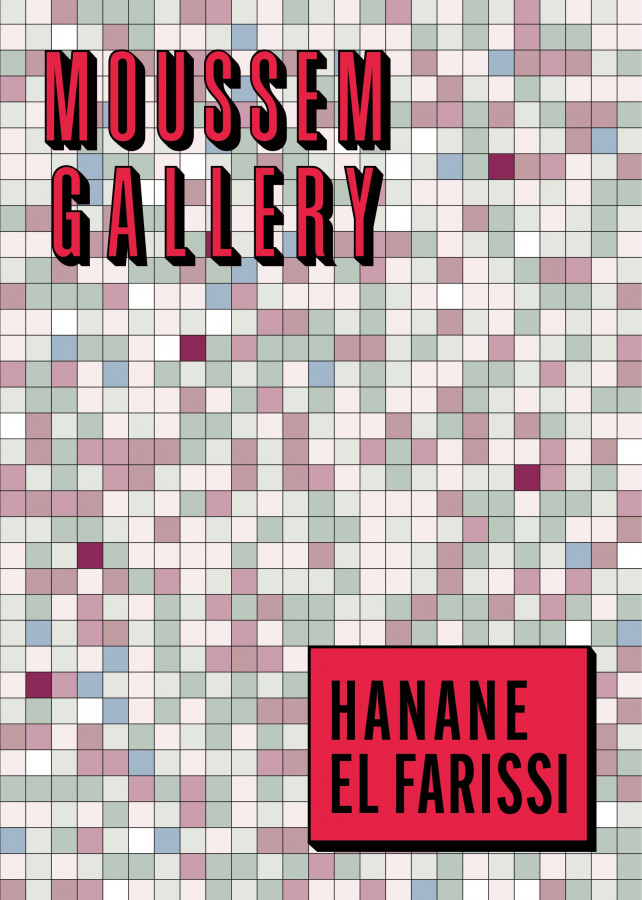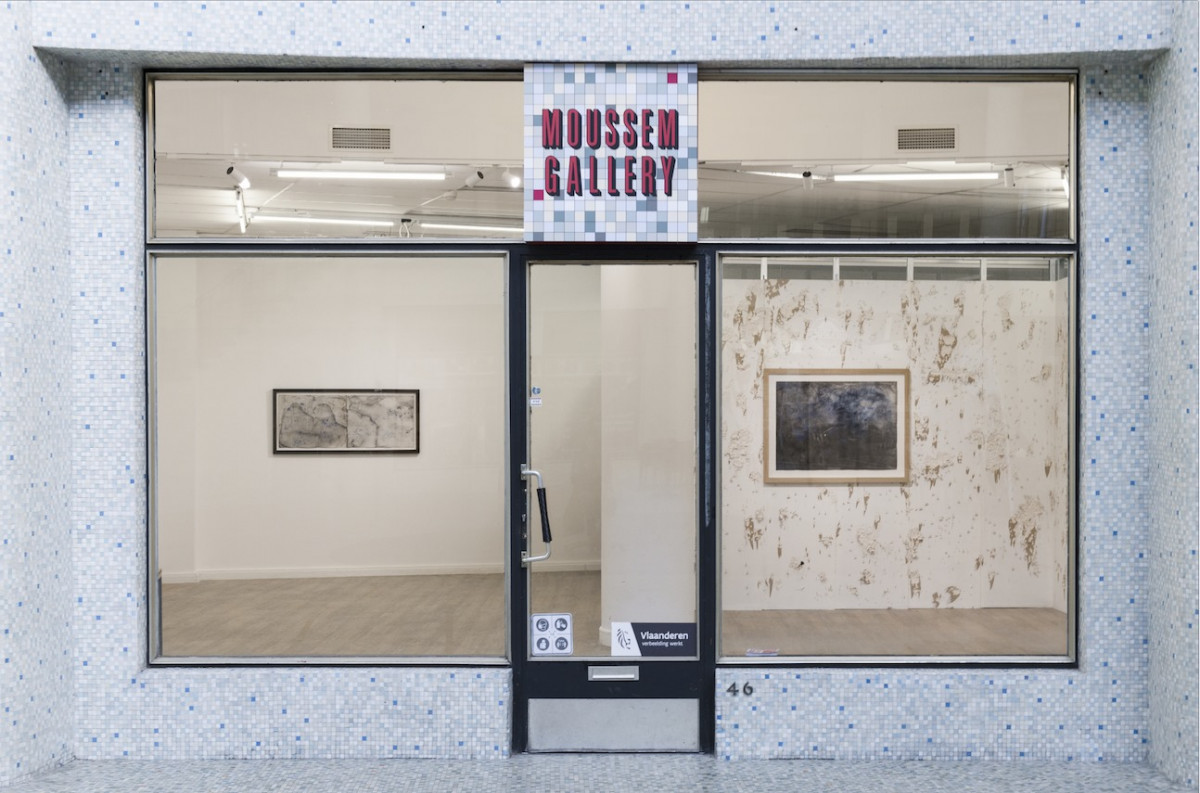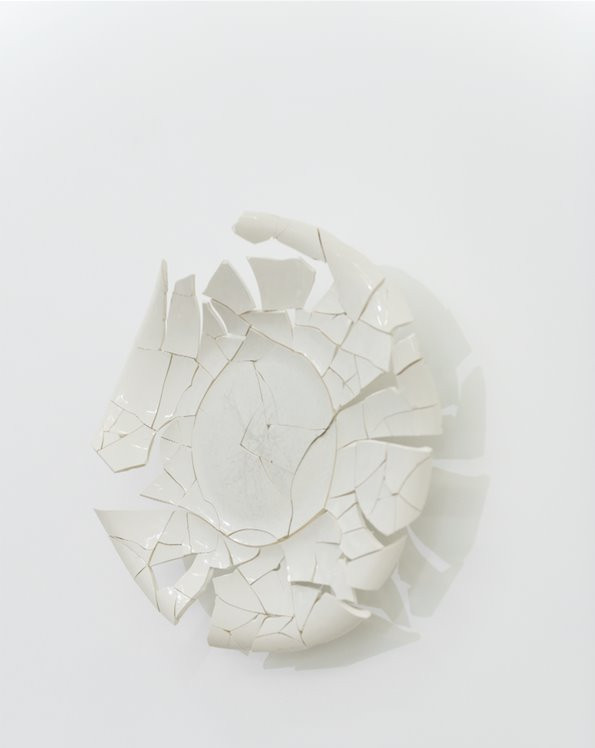
 © Solal Israel
© Solal Israel
 © Solal Israel
© Solal Israel
MOUSSEM GALLERY III
Destroy, and a time to start over - Hanane El Farissi
Curated by Phillip Van den Bossche
Expo 08.10 > 13.11.21
Wednesday > Saturday 12:00 > 20:00
Vernissage 08.10 - 7 > 9 PM
Ravenstein Gallery 46 - 1000 Brussels
The artist is present on October 15, 23 and 29
In the context of the current health crisis, Moussem looks for other forms of presentation. Thus our former offices in the Ravenstein Gallery are transformed into the Moussem Gallery exhibition space.
Phillip Van den Bossche about the expo
A drawing is not just an image. The drawn line connects us both to the past and to what is yet to come. Concentrate on the now as you approach Hanane El Farissi's drawings. The entrance to the dimension of her drawings is here and elsewhere. It starts with preparing the paper, to bring to life a background that, from a distance, could also be a foreground. It's a long process. Mixing ink with water creates light and dark grey spots with black moving edges. The abstract forms sometimes resemble a form of cartography, or even the mental interior of capricious cloud fields. Nevertheless, there are always enough light zones, even more so: the white paper remains partly unprocessed. Finding the right balance is time consuming. Do not saturate the paper with water; the background drawing must not clog. Only then do the drawn lines appear, blue and delicate, like the sun accentuating the small leaves of an olive tree.
Hanane El Farissi draws architectural landscapes. These are always fragments: a part of a house, a facade, a street, and above all windows, are connecting several houses and floors in her drawings. The house often turns out to be a ruin. The destruction is visible. Time passes quickly or slowly, resulting in outward violence. Everything is destroyed, the I, yours, mine, except the self, Marguerite Duras once said. That's how I remember her words. She has put them on paper, behind a window, sitting at a desk.
Some of the windows drawn by Hanane El Farissi are completely blue, elsewhere there is only the contour of the window opening. What happened behind these facades? Or what has the outside world destroyed or wanted to destroy at the inside? Yet a poetic self, however fine and light, cannot simply be beaten by force. Small zones in her drawings are filled in with gold-coloured pieces, visibly restored. The fracture is repaired and at the same time the resistance is emphasised – as in the Japanese kintsugi technique: the porcelain plate has both a visible past and a future.
From the 1930s to the end of his life, Brassaï photographs graffiti on Parisian facades. The majority consists of figures and faces. The stones are damaged, scratched. Brassaï walks through the streets at night, his flash capturing the drawing. In Hanane El Farissi's drawings there is no day or night but the words come inaudibly from the window openings, to lines like tattooed memories, to the edge of what you have become.
Nothing is distorted here, El Farissi seems to emphasise with her artistic research. The violence is part of the past and the future, and therefore also of the present. Then show the under-signs, to rebuild them completely differently this time.
Hanane El Farissi's exhibition for Moussem is the first presentation of a research trajectory into allegorical connotations, symbols, gestures and under-signs, both in the contemporary abundance of violent news images and in the mostly Biblical representations in historical paintings of the Flemish Primitives. She shows a moment in her research that consists of drawings, an installation, and reworked elements from one of her recent performances. Who sets the codes when representing violence? 'Je suis pour qu'on oublie l'Histoire. [...] Complètement', says Marguerite Duras. Destroying to recreate – it's about the movement.
Phillip Van den Bossche, 20.09.2021, Sidi Moussa, Marrakech
Curated by Phillip Van den Bossche
A Moussem production supported by: de Vlaamse Gemeenschap, VGC, The Brussels-Capital Region
MOUSSEM GALLERY III
Destroy, and a time to start over - Hanane El Farissi
Curated by Phillip Van den Bossche
Expo 08.10 > 13.11.21
Wednesday > Saturday 12:00 > 20:00
Vernissage 08.10 - 7 > 9 PM
Ravenstein Gallery 46 - 1000 Brussels
The artist is present on October 15, 23 and 29
In the context of the current health crisis, Moussem looks for other forms of presentation. Thus our former offices in the Ravenstein Gallery are transformed into the Moussem Gallery exhibition space.
Phillip Van den Bossche about the expo
A drawing is not just an image. The drawn line connects us both to the past and to what is yet to come. Concentrate on the now as you approach Hanane El Farissi's drawings. The entrance to the dimension of her drawings is here and elsewhere. It starts with preparing the paper, to bring to life a background that, from a distance, could also be a foreground. It's a long process. Mixing ink with water creates light and dark grey spots with black moving edges. The abstract forms sometimes resemble a form of cartography, or even the mental interior of capricious cloud fields. Nevertheless, there are always enough light zones, even more so: the white paper remains partly unprocessed. Finding the right balance is time consuming. Do not saturate the paper with water; the background drawing must not clog. Only then do the drawn lines appear, blue and delicate, like the sun accentuating the small leaves of an olive tree.
Hanane El Farissi draws architectural landscapes. These are always fragments: a part of a house, a facade, a street, and above all windows, are connecting several houses and floors in her drawings. The house often turns out to be a ruin. The destruction is visible. Time passes quickly or slowly, resulting in outward violence. Everything is destroyed, the I, yours, mine, except the self, Marguerite Duras once said. That's how I remember her words. She has put them on paper, behind a window, sitting at a desk.
Some of the windows drawn by Hanane El Farissi are completely blue, elsewhere there is only the contour of the window opening. What happened behind these facades? Or what has the outside world destroyed or wanted to destroy at the inside? Yet a poetic self, however fine and light, cannot simply be beaten by force. Small zones in her drawings are filled in with gold-coloured pieces, visibly restored. The fracture is repaired and at the same time the resistance is emphasised – as in the Japanese kintsugi technique: the porcelain plate has both a visible past and a future.
From the 1930s to the end of his life, Brassaï photographs graffiti on Parisian facades. The majority consists of figures and faces. The stones are damaged, scratched. Brassaï walks through the streets at night, his flash capturing the drawing. In Hanane El Farissi's drawings there is no day or night but the words come inaudibly from the window openings, to lines like tattooed memories, to the edge of what you have become.
Nothing is distorted here, El Farissi seems to emphasise with her artistic research. The violence is part of the past and the future, and therefore also of the present. Then show the under-signs, to rebuild them completely differently this time.
Hanane El Farissi's exhibition for Moussem is the first presentation of a research trajectory into allegorical connotations, symbols, gestures and under-signs, both in the contemporary abundance of violent news images and in the mostly Biblical representations in historical paintings of the Flemish Primitives. She shows a moment in her research that consists of drawings, an installation, and reworked elements from one of her recent performances. Who sets the codes when representing violence? 'Je suis pour qu'on oublie l'Histoire. [...] Complètement', says Marguerite Duras. Destroying to recreate – it's about the movement.
Phillip Van den Bossche, 20.09.2021, Sidi Moussa, Marrakech